Description
CHAPTER ONE
1.0 INTRODUCTION
The primary economic objective of any developing nation all over the world is to improve on the rate of its economic development which at the end results into corresponding increase of improvement in the living standards of its populace. Therefore, for an organization or other bodies to function well and improve its services, each organization needs to finance consequently the three tiers of government; all of them have sources of revenue authorized by the constitution of the federal republic of Nigeria and other subordinate laws of the federal, state, and local government.
The board of internal revenue is charged with the authority in the state to asses tax from all taxable adults, companies and other cooperative bodies. The board extends its operations to the local government and collects taxes in form of pay as you earn PAYE and with holding tax, with Ogoja local government inclusive. Thus to realize the mandate of service delivery Ogoja local government collect taxes on all rateable sources as authorized under the fourth schedule of the constitution of the federal republic of Nigeria 1999. such sources include market and worker parks, birth and death registration, adultered parks and open place, public convenience, licenses, land dues, to mention but a few in addition, all local governments in Cross River state are entitled to statutory allocation from the federation account and the 1 internally generated revenue of the state.
1.1 BACKGROUND OF THE STUDY
This project work which is on the topic Revenue Generation in Cross River state, with Ogoja local government as a case study is undertaken by the researcher to examine the strength of our local government in cross river state on how local revenue is generated. It has been observed that, autonomy cannot be adequately attained in absence of sufficient funding in view of the above internal revenue effort is the major focus of this research work. Revenue is the funds that are generated by the government for public use. Ogoja became a local government area after1976. local government reforms cassied throughout the country. It is made up of 12 clans, Ekaguk, Nkim, Yala, Mbube, Afrike, Ishibori, Jabu, Bekwarra, South Ukele, Western Yala, Yache, and North Ukele which covers about 3,355 square kilometers.
The people are predominantly subsistence farmers producing such crops as rice, cassava, yam, banana, plantain, oil palm etc. in fact, Ogoja local government of has consistently been regarded as the food basket of the cross river state. The local government is bounded in the North by Vandeikya local government of Benue state to the south by the Obubra local government, to the east by Ikom local government, to the western by the Ijagem speaking people. The case study of this work is Ogoja local government council of cross river state since the local government has been carrying out the duties in the areas of revenue generation through taxes and non revenue in order to support the government in performing its functions and also seeks ways to improve the living standard of the people. The local government through remotely located has a good number of ways through which revenue is generated.
Ogoja local government council has revenue collectors who are the staff of the financial department. In an attempt to control the collection of the revenue and to ensure the proper adequate payment of revenue to the local government revenue section, revenue supervisors are usually appointed to over see the affair of revenue collectors at their various duty posts.
The services of private persons or companies are at times employed to help in some respect of collecting the revenue, for the local government.
1.2 HISTORICAL PROFILE OF OGOJA LOCAL GOVERNMENT
The historical profit of every local government is based or guided by historical economic, social, political and geographical circumstances in order to create stability and viable institution in the federal system such as France. There is a strong effect of centralization of authority.
The 1997 local government reform in Nigeria have gone along way to stabilize the system since its beginning there exist in the country. For this, all the local government like Ogoja local government maintained multipurpose single tier mode with completed and seeks contained subject, so that it could be identified and coordinate within any area constitutionally.
Ogoja local government in the world has been recognized as the third tiers of government that gains its statutory powers from the state government in 1989 committee and in 1986 appointed caretaker chairman of9091 and 9495 and the present transition committer 2002 to date.
1.3 STATEMENT OF THE PROBLEM
As it pointed out in the introduction of this research, the creation of local government is justified on the ground that it would make the impact of government to be felt by the people for this reason, the local government is vested with the task of providing and performing some services and functions, section 73 of the 1979 constitution and section71 of the 1999 constitution of the federal republic of Nigeria, state that it shall be the duty of a local government council within the state to participate in economic planning, social infrastructural development of its area of jurisdiction. Under the fourth schedule of the 1979 and 1999 constitution the main functions of local government includes the construction and maintenance of roads, street and others, public highways, parks open spaces and the provision and maintenance of primary education, health facilities, the development of agricultural and natural resources.
The 1979 constitution which is also embodied the relevant sections of the 1976 local government reforms specified the councils sources of revenue. This is the important in that, the capability and performance of the local government ridges on the resources at its disposal. A big purse will certainly enhance adequate programme implementation and this will enable the local people enjoy.
But since 1996 the history of revenue mobilization in Ogoja local government has been generally poor as it falls below expectation account. This fall in revenue generation has been contribute to a number of problems in the local government.
In spite of the fact that Ogoja local government area is blessed with vast human and material resources, its revenue generation level is very low. If there is advancement at all, it must be at a painful slow rate.
This research therefore, seeks to find out what must have been responsible for poor revenue generation in Ogoja local government. If this may be a contributing factor the poor services delivery expressed in the local government within the period under review. Thus the research question becomes.
1.4 RESEARCH QUESTION
The research question that facing this study is includes:
i How does Ogoja local government generate revenue in its areas of function
ii What is the problem that is associated with Ogoja local government revenue generation
iii How efficient are the people in charges of revenue collection in Ogoja local government
iv What technique does they use to generating revenue in the Ogoja local government
1.5 OBJECTIVES OF THE STUDY
The objectives of this study are as follows:
i To find effective strategies for generating revenue in Ogoja local government.
ii To find out effective possible ways of increasing the internal revenue generating in the local government.
iii To suggest possible ways of increasing the internal revenue generation in the local government.
iv To examine the problem inhibiting revenue generation in the local government.
v Ultimately it is a requirement for the award of National Diploma in public administration.
1.6 SIGNIFICANCE OF THE STUDY
Finance is the most important asset and the life wire of any government.
In Nigeria many local government councils are usually faced with the problems of effective generation of their internal revenue. The research will examine the various sources of revenue available to the local government and to ascertained if all available sources are tapped or harnessed to the required level as is budgeted as the financial estimates of the local government.
This work will also help some students who will come across it in the process of carrying out similar study in the future.
1.7 SOURCES OF INTERNAL AND EXTERNAL REVENUE GENERATION
The sources of internal and external revenue generation form that 78 should give to the local government council in Cross River state:
These are the sources of internal and external revenue generation as are follows:
a Community tax: This is a type of tax that is levied o a flat rate among the adults in the various community, towns and villages under the jurisdiction of the local government.
b Local government licenses, fees and rates: These include licenses, granted for various form of activities, it includes building and other property.
c Local government tenants rate: These are taxes imposed on both private and commercial building by the local council.
d Local government investment revenue: Investments arises from interest and dividends accruing from security quoted and unquoted fixed deposit bank account, treasury bills.
e Constitution from other local government: An interlocal government financial flow arises in a number of ways.
The external revenue sources are as follows:
a Taxes: Taxes include both direct and indirect taxes, government can impose tax on its citizens and corporate bodies so as to generate revenue in the local government.
b Saving: Revenue can also be generated from countrys savings. For example, if a country has a budget surplus, such money can be used to finance a lot of project in the local government.
c Loans and grants: In order to generate revenue for a country, sometimes government may embark on obtaining loan from both the external and internal revenue sources.
1.8 REVENUE FROM OTHER CHARGES/LEVY
The local government imposes some charges on the services to the public. It is however, to know that charges are very cheap rate compared to the cost of providing them. The charges imposed are mostly utilized to maintain the places of services and the upkeeping; some of the examples of these charges are as follows:
i Motor park charges
ii Market charges
iii Apprentices
iv Slaughter
v Licenses
1.8.1 MOTOR PARK CHARGES
This is also a levy imposed and the user of motor parks, drivers of the commercial vehicles, traders, mechanics, restaurants who sale food in the parks and mostly affected by this type of levy.
1.8.2 MARKET CHARGES ON STORES
It is a levy imposed on shops or store users in the market. The levy differs also as it is in the location of the market, the rate of tax may also not be the same even in the market.
1.8.3 REVENUE LEVY FROM PRODUCE
Produce in the term that is commonly used by the revenue collectors or department of local government, as they imposed a levy on agricultural products lifted by government for sale on the total number of days loaded in a lorry, produce can also charge on them.
The researcher wish to state that, no reference could be made too much tax: boxes since this source of revenue was found to be only common to Ogoja local government. Observation was made during the visit of the researcher to the Ogoja local government; this is the result of the writer inability to get the reasonable information on weather or not form of tax is practice or authorized by the local government.
1.9 DEFINITION OF TERMS
vLocal government according to Emezi 1986, refers to the political authority set up by a state as a subordinate authority for the purpose of dispering or decentralizing political power as well as promoting local initiatives and responses to local needs.
vAccording to Agi 2002, local government refers to as government at the local level exercise through representative councils established by law to excise specific powers within defined areas.
vRevenue: According to Terfa 2001, revenue is the amount of money that government collects or received from taxes or that an organization receives from its business.


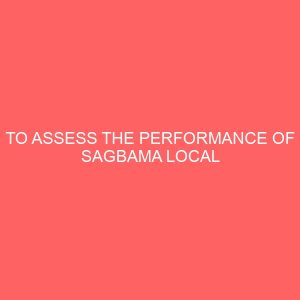
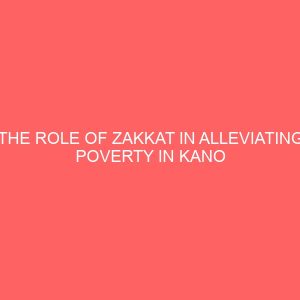

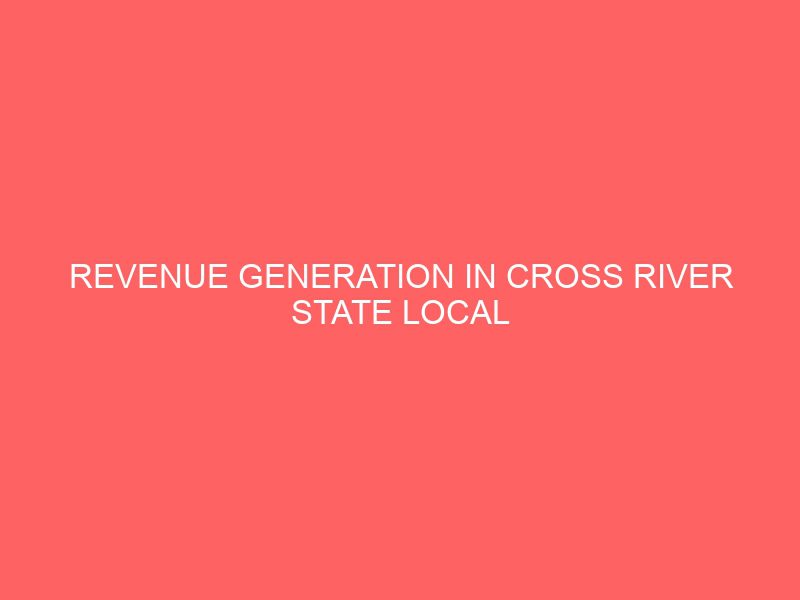
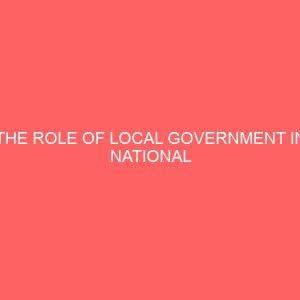
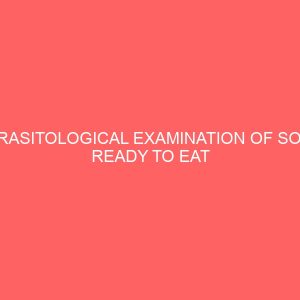
Reviews
There are no reviews yet.